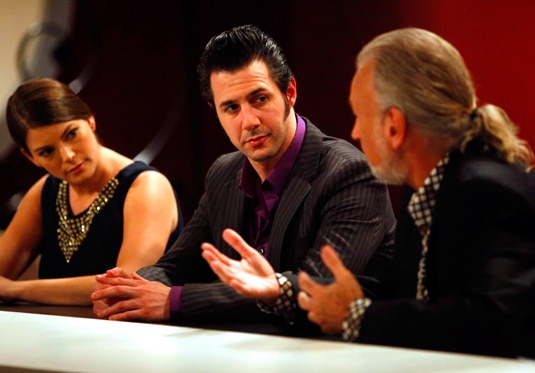What the Chef?
Having trouble understanding some of the dessert lingo. Eli Kirshtein is here to help.

So for this inaugural season of Top Chef: Just Desserts, I have been asked by Team Top Chef to take a slightly different role in my blogging responsibilities. Instead of a traditional recap and explanation of the challenges I will help open the door to the clandestine world of pastry. I will help explain the challenges a bit if they have some sort of additional significance to a pastry chef, as well help give a few definitions of some of the more remote and bewildering terms used during the season. I also will help give a little background into some of the chef judges over the course of the season. With that being said, lets get this party started with our head judge himself.
Johnny Iuzzini, realistically is one of the top ten most important and relevant pastry chefs in the world today. His career has been studded by the “Who’s Who” of the New York pastry world. With stints early on in his career under such giants as Eric Gouteyron at the legendary River Café in Brooklyn and Francois Payard at both Restaurant Daniel and his eponymous store in Manhattan. With this experience in addition to his Culinary Institute of America diploma, he had all the building blocks needed to be successful at a high level. He was then given the opportunity to be the Executive Pastry Chef at the world renown Restaurant Daniel. He then moved to the now Michelin three-star Jean-Georges where he still is today. In his time there he has sculpted a unique style, integrating modern technique with classic sensibility. He is a true scholar of the world of pastry and it shows, that in addition to having himself in the mix of forward thinking desserts, he is a perfect fit for the head judge on Just Desserts.
With regards to some terminology used, there were a few specifics from the first two weeks brought to my attention that could use a little clarification.
First off is “Cremeux.” Due to the fact that there are several spellings of the term it can become confusing but with the original spelling it comes with a literal translation from French to the word creamy. While there are many ways to garnish and flavor the item it should essentially have the components of eggs, cream, and sugar. It can be cooked in a water bath, think an un-browned cream brulee, or it can be cooked in a pan and chilled in a mold or form. It is then served cold. Over all it has a smooth rich consistency. So far the chefs have been using it as fillings and garnishes for main components on dishes.
The next two can be kind of lumped together for this application. We have “Agar-Agar” and “Carrageenan.” These are both food additives, often in the form of easy-to-use powders known as hydrocolloids, which are derived from seaweeds. They have similar properties in that they cause a gelling effect. One of the most interesting behaviors of agar-agar is that its melts at a higher temperature than traditional gelatin. This allows for the chefs to have a “Hot Gel” so to speak. Agar-agar as well as carrageenan both have a somewhat more brittle texture than of conventional gels. This isn’t to say it’s crunchy, but less super-flexible and more soft but breakable.
The last is a “Granita.” Traditionally it is from the southern Italy, specifically Sicily. It is fundamentally a flavored and sweetened frozen ice. Think the ancestral inspiration for a snow cone. Many cultures have variations of granitas but the term has become sort of ubiquitous for shaved ices. Most of the chefs who use them will make a flavored water and freeze it, then shave it down to a consistency ranging from very chunky to almost smooth and sorbet like.
Follow me on Twitter @elikirshtein



